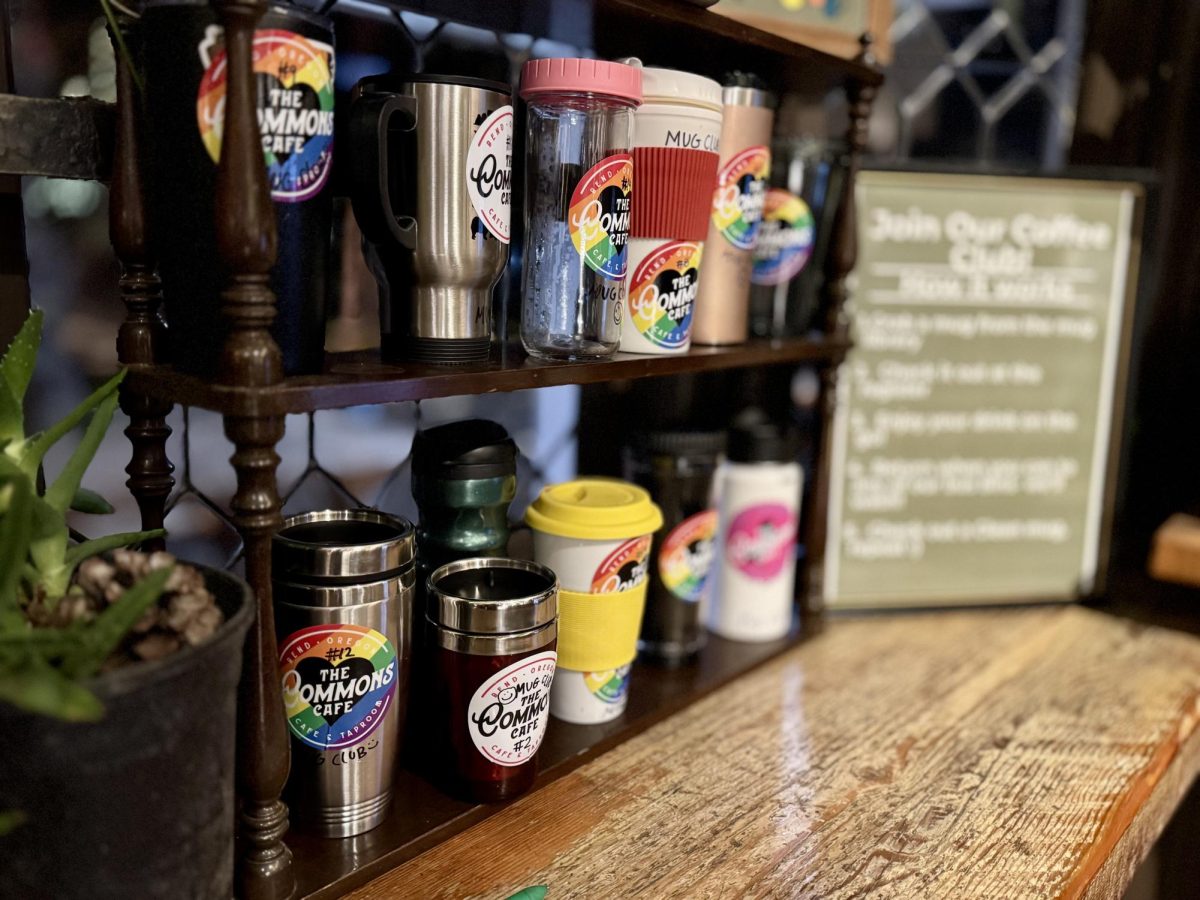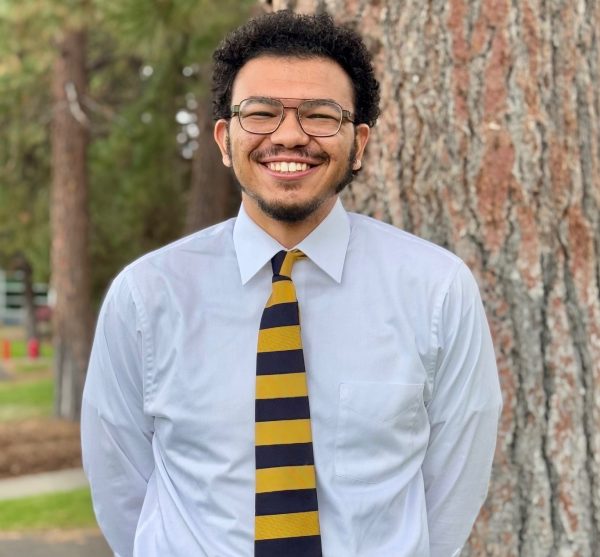From 2021 to 2023 there was only one reported rape case and two reported cases of fondling found at Central Oregon Community College. In 2024, students reported nine cases of sexual misconduct, an intentionally vague definition that can be any form of nonconsensual sexual contact. Only one of nine students pursued their incident further.
The college had an average of 12,367 students during that period. The Rape, Abuse & Incest Network reports that 13% of all students experience rape or sexual assault in some form. If 1,584 is 13% of the student population: where are the rest of the survivors?
The Broadside interviewed a variety of individuals to better understand the issue. Sarah Harsey from Oregon State University-Cascades, COCC staff Alicia Moore and COCC student Grace Buczynski who shared her experience of sexual grooming by a former staff member.
Moore, vice president of student affairs, explained the strict definitions of sexual violence included in the mandatory yearly reports known as Clery reports. Sexual grooming is not included the Clery reports, which are submitted annually by nearly every college and university in the country. The only crimes included are rape, fondling, incest and statutory rape.
Prior to 2024 no state report on sexual misconduct at COCC had been filed because it was not required by Oregon legislature; no other records of sexual crimes exist outside of the Clery reports.
Moore estimated the average yearly number of cases from the last six years to be three to five but was unsure if the reported cases are accurate to students’ experience at COCC.
OSU-Cascades’ Clery reports yielded similar numbers from 2021 to 2023 with two reported rape cases and one reported case of fondling but held a much smaller average of students at the time, 1,339 students to COCC’s 12,367.
Harsey is an assistant-professor at OSU-Cascades with a doctorate in psychology. She teaches and researches psychology of trauma.
“Sexual violence happens because people get away with it,” she stated.
She explained that sexual violence is more common in college because young people are living together where alcohol is often part of the culture. Studies, like that of Professor Antonia Abbey of Wayne State University and her colleagues in 1991, found that anywhere from 37-74% of perpetrators have been under the influence of alcohol.
She discussed sex scripts: notions of sexual contact. Sex scripts are culturally informed and are both a result of exposure to media like movies, television, pornography, and the people in one’s life. She said expectations of sexual contact can be dangerous if they have been formed by toxic culture: “what if someone’s sex script doesn’t ask for consent?”
She emphasized media’s role and influence on sex scripting and objectification. The aforementioned media are all commonplace in society and have objectified representations of women.
Harsey said “people who are objectified experience more sexual violence, and people who objectify others are more likely to perpetrate sexual violence.”
Grace Buczynski, a contributing writer at The Broadside, shared her experience of being one of at least five women, she said, groomed by former COCC custodian Billy McClain. Sexual grooming is a gradual escalation of manipulative behavior toward someone to gain sexual access.
McClain’s case remains an open investigation according to the Bend Police Department and no official details can be shared, according to Sheila Miller, a spokesperson for the department. Several COCC officials, including Dr. Laura Boehme, vice president of people and technology, declined to share any clarifying information or comment in any capacity. McClain did not respond to requests for comment.
Buczynski and McClain were friends since the beginning of 2024 fall term but over winter term is when the amount of contact at the dining hall, in the Coats Campus Center, began to increase. Before winter break McClain gave Buczynski his phone number, which she never used to call him. She never gave him her own number yet he called her during winter break. She doesn’t know how he got it.
Harsey said, contrary to the stereotype of a dangerous stranger, perpetrators are usually acquaintances or even family members.
The National Intimate Partner and Sexual Violence Survey from 2016 to 2017 reported:
“During their lifetimes, more than half (59.9%) of female victims of unwanted sexual contact reported that their perpetrator was an acquaintance followed by 1 in 5 (22.9%) who reported a family member, 1 in 5 (22.4%) a stranger, nearly 1 in 6 (16.8%) an intimate partner, nearly 1 in 9 (11.7%) a brief encounter…”
After winter break McClain started to buy her lotions and bring Buczynski his living wife’s possessions–clothes, purses and jewellery. He’d ask her to wear the items and praised her when she did. He bought her marijuana she never asked for when she did well in school.
“If I did anything that pleased him, he would literally leave work to (buy marijuana.)” she said. It went from a monthly to every few day occurrence. Buczynski said it was a tactic to manipulate her into visiting him.
On January 16, McClain appeared before her dorm room entrance late in the evening; she hadn’t told him her specific address. He claimed to have keys to unlock every dorm room on campus. She remains uncertain whether he was telling the truth.
His actions escalated further: he would call at least a dozen times before 7 a.m. He begged to drive her to work or class. He said who she could and couldn’t associate with or date and made frequent comments on her body. She detailed one example:
“One day I wore a dress and it was a little revealing … and he could not stop calling me beautiful. He couldn’t stop asking for hugs or rubbing my shoulders. It was getting very overwhelming. I still didn’t realize what was going on at that point … when you’re groomed, that’s kind of the point. You don’t realize what happens because of the slow increase of intensity and isolation. It’s very manipulative, and he was very successful.”
On March 5, Buczynski told him to cease contact and the following day he was put on leave. Shortly after signs with #freeBilly appeared around the Bend campus, also on the white board attached to Buczynski’s door. Students assumed she reported him for peddling drugs and were upset with her. A student shoved her in a stairwell and said, “you’re that b— who got Billy fired, aren’t you?” She doesn’t know who reported McClain.
After he was placed on leave, he appeared at both her job and on campus. She was denied both a restraining order and stalking protective order by the police and said it was them who told her McClain was fired, not the college.
Harsey discussed institutional betrayal: when the institution fails to protect survivors, take proper action after sexual violence has taken place, make it difficult to report, or try to keep the survivor silenced. She said this could be one of the reasons for COCC’s low statistics.
Institutional betrayal has manifested in blaming the accuser, telling them not to discuss their situation with others and an overall feeling of betrayal. This can lead to survivors not reporting similar instances in the future, encouraging others to avoid reporting, and worse post-traumatic stress symptoms.
Buczynski had complaints with how the college handled the situation and a lack of transparency with the process. She said Andrew Davis, the dean of student engagement, told her not to tell anyone about the grooming and not to delete evidence: calls, voicemails and text messages.
He told Buczynski she was the most important piece of evidence against McClain and her victimization was the worst they heard of all those involved. She said she was hurt by the comparison to other survivors and disgusted with COCC for being considered evidence, an object.
Davis declined to comment, describing it as a personnel issue.
“They’re delusional if they believe that they are transparent and doing the most to protect their students,” Buczynski said.
COCC offered her an escort to and from classes. She called it useless because McClain knows her schedule. There were only six free therapy sessions offered. She asked about getting more and said the college never followed up. She said there should never be a limit on therapy sessions for a student, especially when the perpetrator was COCC staff.
“After I went to therapy for it, my therapist told me that Billy was the first offender but the school was the second.”
She described justice as being able to get a restraining order against him. “The day I found out that what he did was grooming I felt so disgusted with myself (that) I took like five showers that day. I don’t want him to be able to get away with it anymore.”
Harsey delineated several barriers survivors face with reporting, such as whether or not they feel reporting it will make a difference. Or wondering if their experience amounted to sexual violence. Other times, specifically with students, they aren’t sure if they can or should report it to the college or have a lack of knowledge about resources and options.
Emotional barriers occur as well. Fear of retaliation if they know the perpetrator or are connected to them in a social setting. Embarrassment for what they experienced. Futility: taking action is not worth the time or energy. And denial, behaving as if nothing happened. If there was no incident, there is nothing to report.
Harsey added: “There’s this expectation for people to be in charge of what happens to them. And if something happens to you that you did not want … it feels for some people like a failure of agency …. Some people may feel that they, in a sense, let themselves down or they could have done something else to prevent it (but) the only person who could have prevented it is the perpetrator themselves.”
She said the line between sexual activity and sexual violence is a matter of communication. A verbal yes is consent, anything else is not. She continued: people tend to know they’ve been mistreated and people tend to have some awareness of the harm in their actions. She encouraged partners, romantic or sexual, to communicate with clear boundaries before engaging sexual activities.
“It’s important for more people to verbally and directly and explicitly communicate their consent and have those conversations, even if they feel awkward,” Harsey said.
She welcomed others to not rely on school or others to educate themselves on how to engage with consent. To seek out organizations, local and national, for information.
“Having these conversations and reading about sexual violence and talking about sexual violence can be really uncomfortable and I want to validate those feelings of discomfort,” she said. “But the same time, I want to encourage people to not let that discomfort turn into them ignoring the subject altogether.”
Resources
- Saving Grace: (541)-389-7021
- National Sexual Assault Telephone Hotline (RAINN): 1-(800)-656-4673
- Planned Parenthood: 1-(877)-212-2323
- Oregon Coalition Against Domestic and Sexual Violence: (503)-230-1951









